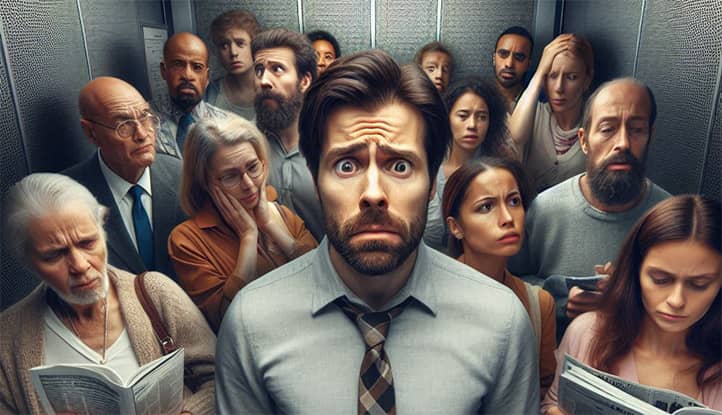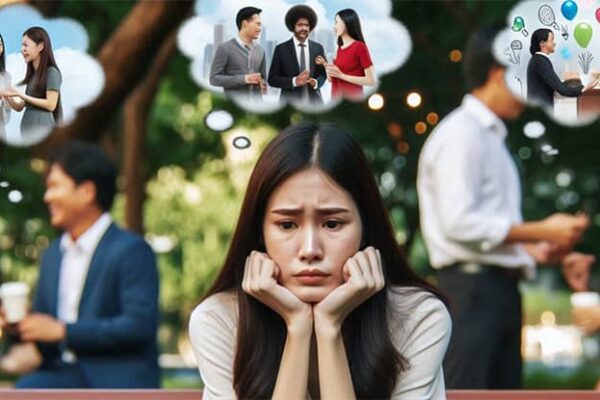Claustrophobia is an anxiety disorder in which a person experiences an intense fear of confined or restricted spaces. This condition arises in situations where the person feels “trapped” or “caught,” such as in an elevator, car, underground space, small room, or even a crowded area. For some, the fear is so strong that they avoid such places even if it disrupts their daily life.
The term “claustrophobia” comes from the Latin word claustrum (closed space) and the Greek phobos (fear). Although fear of enclosed spaces might seem like a natural response, claustrophobia goes beyond ordinary discomfort and becomes a source of constant anxiety, impacting a person’s emotional and physical state.
Claustrophobia is one of the most common phobias, with an estimated 5–7% of the population experiencing its symptoms at least once in their lifetime. This fear of enclosed spaces affects people regardless of age, gender, or social status.
In modern society, claustrophobia is an especially pressing issue, as many people encounter fear-provoking situations daily: from public transportation (especially during rush hour) to being in offices and elevators. Moreover, the unpredictability and fast pace of life, along with constant pressure and stress, can heighten fears, making claustrophobia symptoms more pronounced.

What is Claustrophobia?
Claustrophobia falls into the category of anxiety disorders and is characterized by an irrational, intense fear of confined or restricted spaces. This fear often surpasses normal worry and leads to a state of panic that the person cannot control.
For those with claustrophobia, being in a tight or enclosed space is perceived as a threat that must be avoided immediately. Even the thought of potentially ending up in a confined space like an elevator or subway can provoke anxiety attacks, disrupting their daily functioning.
On a physiological level, claustrophobia can trigger the release of large amounts of adrenaline and activate the “fight or flight” response, explaining the body’s intense reaction to frightening situations. Claustrophobia varies in severity: for some, it is merely a mild discomfort, while for others, it’s a serious disorder that significantly impacts their life.
Examples of Situations That Trigger Claustrophobia
Claustrophobia manifests in specific situations where a person finds themselves in tight or enclosed spaces. Here are some examples:
- Elevators. One of the most common claustrophobia triggers. The fear of being trapped without a way out causes intense anxiety.
- Airplanes. The restricted space of an airplane, especially on long flights, can heighten fear as leaving the plane is impossible.
- Subways and trains. Especially in tunnels and underground sections where the person feels enclosed and unable to leave at any moment.
- Cars. People with claustrophobia may avoid car rides, particularly if they feel trapped, like when stuck in traffic.
- Small rooms or corridors. Some feel anxious in small spaces or narrow corridors where they feel enclosed.
- Medical procedures. For example, MRI or CT scans require staying in a confined space, often triggering claustrophobic attacks, sometimes causing patients to refuse these tests.
- Crowded places. Crowded spaces like concerts or public events can provoke a claustrophobic reaction due to limited movement and exit options.
These situations are linked by the feeling of being “trapped” with no immediate way out, a key factor in claustrophobia.
Why Does the Fear of Enclosed Spaces Go Beyond Ordinary Discomfort?
Ordinary discomfort in enclosed spaces can happen to many people and does not require special treatment. However, claustrophobia is a far more intense condition, causing panic and fear beyond rational control. Unlike mild nervousness that may arise for anyone in an enclosed space, claustrophobia leads to powerful psychophysiological reactions that cannot be suppressed on their own.
For someone with claustrophobia, such spaces are not just uncomfortable—they are perceived as an immediate threat to life, even if there is no real danger. This irrational fear triggers the body’s reaction to a real threat, causing rapid heartbeat, sweating, dizziness, and even panic attacks. The person feels helpless in the face of this fear, and without proper therapy, such attacks may worsen.
Different Levels of Claustrophobia and How They Manifest
Claustrophobia can manifest at varying levels of intensity:
- Mild level. The person experiences moderate anxiety in enclosed spaces but can live a full life. They might avoid certain places (e.g., elevators) but can manage to be in them if necessary, controlling their emotions.
- Moderate level. Here, the fear becomes more pronounced: the person avoids many situations that could trigger a panic attack. For example, they may avoid using elevators or the subway altogether, causing inconvenience in daily life.
- Severe level. A person with severe claustrophobia refuses many social and professional opportunities. Claustrophobia symptoms are so intense that they cannot even stay in relatively spacious but enclosed spaces, like conference rooms or small offices. Such individuals require continuous support or professional help, as their life becomes restricted by fear.
Each level of claustrophobia requires a different approach to treatment and self-help. For those with severe forms, this fear becomes a dominant life factor, influencing their decisions and behavior.
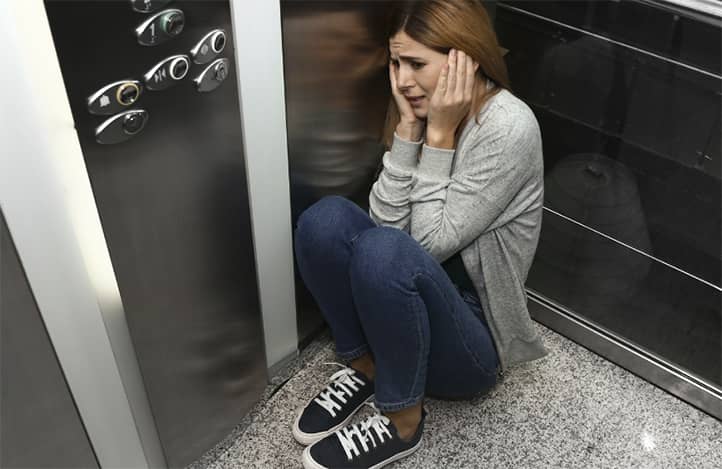
Claustrophobia Symptoms
Claustrophobia manifests through a wide range of symptoms that can be divided into two main categories: physical and psychological. Symptoms may vary in intensity, from mild to severe, depending on the level of anxiety disorder in the individual. Let’s break down each type of symptom in more detail.
Physical Symptoms
Physical symptoms are closely linked to the body’s response to fear and anxiety. When a person with claustrophobia enters a confined space or even thinks about such a situation, their body triggers a “fight or flight” response, caused by the release of adrenaline and other stress hormones. Here are the main physical symptoms that may accompany claustrophobia:
- Increased heart rate (tachycardia)
A claustrophobia episode is often accompanied by a rapid heartbeat, due to elevated adrenaline levels that prepare the body for possible escape or struggle. This increased heart rate may feel like chest heaviness and can provoke additional anxiety, as the person may fear a heart attack. - Shortness of breath or difficulty breathing
A feeling of breathlessness is a typical symptom of claustrophobia. It may be related to hyperventilation (an increased breathing rate), which lowers carbon dioxide levels in the blood, causing dizziness and weakness. The individual may feel that they are “lacking oxygen,” further intensifying their fear. - Dizziness
Hyperventilation and adrenaline release can cause dizziness. This sensation increases the sense of loss of control and often triggers additional fears, such as the fear of falling or losing consciousness, making the situation even more frightening. - Sweating (especially on the palms and forehead)
Stressful situations are often accompanied by heavy sweating. For people with claustrophobia, their palms and forehead may become moist, which is a natural reaction to anxiety. This symptom can further aggravate the sense of discomfort and restriction. - Tremors or body shakes
Trembling may occur in the hands, legs, or throughout the body. This is another sign of the active sympathetic nervous system reacting to the threat. Trembling can heighten the sense of helplessness, as the person feels their body is “betraying” them, losing control. - Stomach symptoms
Anxiety is often accompanied by digestive issues: nausea, uncomfortable stomach sensations, or even vomiting. This occurs because, under stress, the body reallocates resources, and digestive activity temporarily decreases, causing discomfort. - Feeling of suffocation or chest tightness
Some people describe this symptom as a sensation that their chest is “being squeezed.” It may be connected to both a physical reaction and an increase in fear.
Psychological Symptoms
The psychological manifestations of claustrophobia are related to the perception and interpretation of the situation. While physical symptoms are automatically triggered, psychological symptoms depend on thought processes and emotional reactions that accompany the fear experience. Here are the main psychological manifestations:
- Panic
Panic attacks are common with claustrophobia. Panic arises when the person feels they cannot leave the confined space or situation. Panic attacks involve intense anxiety, fear, and a sense of loss of control. Panic intensifies as physical symptoms increase, creating a vicious cycle of anxiety. - Feeling of helplessness and loss of control
People with claustrophobia feel they are losing control over the situation, which adds to their distress. This sense of helplessness increases anxiety, as the individual sees no way out and feels trapped. - Intrusive thoughts of possible danger
These thoughts are often irrational but seem entirely real to someone with claustrophobia. For instance, they may start thinking that the air in the elevator will soon run out or that they will get stuck with no one to help. These intrusive thoughts fuel fear and create tension. - Fear for health or life
Claustrophobia can trigger a fear that being in a confined space will lead to health deterioration or even death. This fear may seem absurd to others, but it feels very real to someone with claustrophobia. For example, a person might fear that they will suffocate or suffer a heart attack in a confined space without anyone able to help. - Strong urge to immediately leave the place
People with claustrophobia often experience an overwhelming urge to quickly exit a confined space, whether it’s an elevator, vehicle, or small room. They feel they can only calm down once they are in the open air or a more spacious area. - Feeling of isolation and loneliness
When in a confined space, a person with claustrophobia may feel that no one supports them or understands their fears. This sensation intensifies anxiety and isolation, as the individual feels abandoned in a dangerous situation. - Avoidant behavior
Fear of confined spaces leads to avoiding situations that could trigger anxiety attacks. This avoidance changes their behavior: they may refuse to take the subway, avoid elevators, skip crowded events, or avoid air travel. Avoidance gradually limits their opportunities and begins to negatively impact their quality of life. - Difficulty concentrating and memory problems
When experiencing intense anxiety, a person may have trouble concentrating and forget details of what’s happening. The fear of a confined space affects them so strongly that they lose the ability to think logically and make decisions.
Interaction between Physical and Psychological Symptoms
The physical and psychological symptoms of claustrophobia reinforce each other. The psychological perception of danger activates physical responses, which in turn amplify anxious thoughts and fears. For example, a rapid heartbeat may make the person think they are experiencing a heart attack, further intensifying their fear and triggering another cycle of panic.
This interaction makes claustrophobia challenging to overcome, as the fear increases both from internal experiences and external sensations.
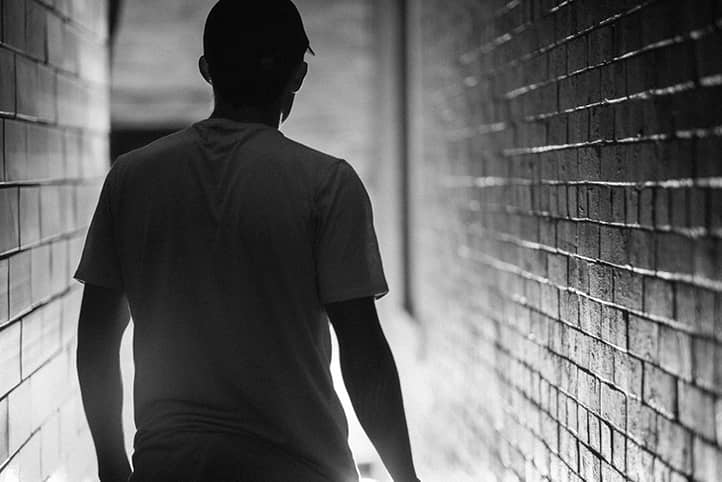
Causes of Claustrophobia: Genetics and Psychology
Claustrophobia is a complex anxiety disorder rooted in both biological and psychological factors. Although the exact causes of its onset are not fully understood, most researchers agree that claustrophobia results from a combination of genetic, neurological, and psychological influences. Let’s explore each of these aspects in more detail to understand how this mental disorder develops.
Genetic Causes of Claustrophobia
Genetics play a significant role in the development of phobias, including claustrophobia. Studies show that the presence of phobias in one or both parents increases the likelihood that their children will also experience anxiety states or fears. Here are the main genetic aspects that may contribute to the onset of claustrophobia:
- Hereditary predisposition to anxiety disorders
Children of people with anxiety disorders often inherit a tendency toward anxiety and fears. While claustrophobia itself is not passed down as a specific phobia, a predisposition to anxious responses in stressful situations can be inherited. This predisposition means that a person is more likely to develop a phobia if they encounter a situation that triggers a fear of enclosed spaces. - Genetic mutations affecting neurotransmitter levels
Some studies suggest that people with phobias have gene variations that regulate neurotransmitters, such as serotonin and dopamine. These substances influence mood, behavior, and stress response. Changes in their levels can contribute to heightened anxiety and a tendency toward phobias. For instance, low serotonin levels are often associated with increased anxiety and depression, which may heighten susceptibility to developing phobias. - Twin studies and family research
Twin studies confirm the presence of a hereditary factor in people with phobias, including claustrophobia. Identical twins, who share 100% of their genes, have a higher probability of developing phobias than fraternal twins, indicating a genetic component. Family studies also suggest that the presence of claustrophobia in parents or close relatives can increase the chances of its development in children.
Neurobiological Causes
Phobias can also be linked to specific brain functions that differently respond to dangerous and safe situations. People with claustrophobia show certain neurobiological features, such as heightened activity in brain areas responsible for fear and stress:
- Amygdala hyperactivity
The amygdala, part of the limbic system, is responsible for fear and anxiety responses. People with phobias may have an overactive amygdala, making them more sensitive to perceived threats and raising anxiety levels. This hyperactivity leads individuals to perceive enclosed spaces as threats, even in the absence of real danger. - Signal transmission issues between the amygdala and the prefrontal cortex
The prefrontal cortex is responsible for rational thought and emotional regulation. Normally, it should “calm” the amygdala in safe situations. However, people with claustrophobia may have disruptions in this system, meaning the prefrontal cortex cannot effectively suppress anxiety triggered by the amygdala. This results in an intensified fear response to enclosed spaces. - Low levels of neurotransmitters regulating anxiety
Neurotransmitters like gamma-aminobutyric acid (GABA) play a crucial role in suppressing anxiety responses. Low levels of GABA or abnormalities in its receptors can lead to increased anxiety and a predisposition to phobias. As a result, even a small enclosed space can provoke panic and discomfort in someone with claustrophobia.
Psychological Causes of Claustrophobia
Psychological factors play a central role in the development of claustrophobia. Many people with this disorder have had negative experiences related to confined spaces or have thought patterns that amplify their fears. Here are the primary psychological factors:
- Traumatic experiences
Most people with claustrophobia have a past negative experience involving enclosed spaces. This could include accidental confinement in a room during childhood, being stuck in an elevator, or another situation that caused intense fear and helplessness. Such traumatic experiences become ingrained and can trigger claustrophobia, especially if the person experienced strong stress or panic. - Modeling and environmental influence
Sometimes, fears develop through observing others’ reactions. If a child sees a parent or close relative afraid of enclosed spaces, they may adopt this fear. Parents or other significant adults may unintentionally pass on their phobias through anxious reactions or stories about the dangers of confined spaces. - Cognitive distortions
People with claustrophobia often suffer from cognitive distortions like catastrophizing. They tend to exaggerate the potential risks and dangers associated with confined spaces, which fuels fear and makes it more intense. - Low self-esteem and avoidance tendencies
Claustrophobics frequently avoid situations that might provoke panic, reinforcing the phobia. This avoidance strategy only strengthens the fear, as the person never has the opportunity to confirm that the situation is safe. This solidifies claustrophobia as a habitual behavior pattern. - Anxiety transfer from other areas of life
Sometimes, claustrophobia is associated with a general level of anxiety and stress in a person’s life. High anxiety levels can “transfer” to enclosed spaces as a specific situation that provokes fear. In such cases, claustrophobia manifests as a sign of generalized anxiety and is part of a broader spectrum of anxiety disorders.
The Role of Upbringing and Personal Experience
Psychological predisposition to claustrophobia can also form in childhood, influenced by the characteristics of upbringing, where parents and the environment play a major role:
- Psychological pressure and control
If a child grows up under strict control and lacks freedom, this may influence their attitude toward enclosed spaces. The fear of losing freedom and control, expressed as claustrophobia, often forms in childhood, when the child feels emotionally constrained. - Isolation and feeling of loneliness
Children who were frequently left alone, especially in confined spaces, may develop fear of such situations. For example, a child who was often locked in a room as punishment may experience stress associated with enclosed spaces. This experience can become the basis for developing claustrophobia in adulthood. - General family anxiety and fears
If a family is prone to worry about minor things or fears even the smallest risks, a child may adopt these fears and develop them into phobias. Constantly observing anxious parents can shape a child’s anxious worldview, in which they see danger even where none exists, including in enclosed spaces.
Thus, the causes of claustrophobia include a complex combination of genetic, biological, and psychological factors. These factors are interrelated, and their influence on each person is unique, making each case of claustrophobia individual.
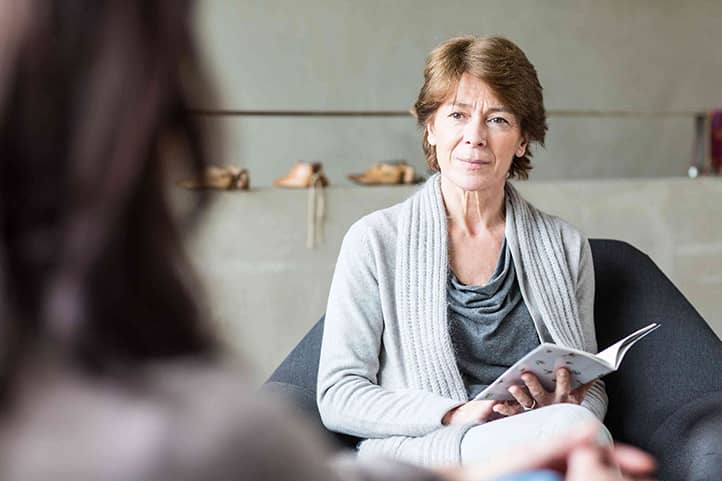
Diagnosis of Claustrophobia
Diagnosing claustrophobia is a multi-step process that requires a thorough analysis of symptoms, the patient’s psychological state, and ruling out other possible conditions that might present with similar signs. Typically, diagnosis is conducted by a psychotherapist or psychiatrist, who uses various methods and tools to make an accurate diagnosis.
Initial Consultation with the Patient
The first stage of diagnosis begins with a detailed conversation with the patient. During this discussion, the doctor gathers information about symptoms, their frequency, intensity, triggers, and situations in which claustrophobia manifests. The specialist also investigates how long the symptoms have been present and how they affect the person’s daily life.
- Analysis of Anxiety-Inducing Situations. The doctor may ask the patient to describe specific situations that cause fear. This analysis helps identify the precise factors that trigger panic.
- Identifying Underlying Causes. The specialist also attempts to determine if there are other, deeper fears that might be causing claustrophobia. Sometimes, the fear of confined spaces is linked to early childhood experiences or events that caused severe stress.
- Assessing the Impact on Life. It is important to evaluate how much claustrophobia interferes with normal life — for example, whether it limits the ability to travel, work, or visit public places. This helps the doctor determine the severity of the disorder and develop an appropriate treatment plan.
Use of DSM-5 or ICD-11 Diagnostic Criteria
After the initial consultation, a psychiatrist or psychotherapist may refer to the diagnostic criteria set out in the DSM-5 (Diagnostic and Statistical Manual of Mental Disorders) or ICD-11 (International Classification of Diseases). These guides outline the official signs used to diagnose claustrophobia:
- Clear and Persistent Fears. According to the criteria, claustrophobia should present as a strong and persistent fear of confined spaces. This fear arises every time the person is in such conditions and may provoke an avoidance reaction.
- Avoidance Behavior. People with claustrophobia tend to avoid places or situations where they might feel “trapped.” The doctor considers how often the patient avoids such places and how much it limits their social activity.
- Physical and Psychological Symptoms. Claustrophobia should induce strong physical symptoms, such as rapid heartbeat, sweating, dizziness, and irrational thoughts about danger. These reactions are key for confirming the diagnosis.
- Duration of Symptoms. Symptoms must persist for six months or longer. Short-term anxiety episodes are not considered claustrophobia.
Psychological Testing and Questionnaires
After analyzing the symptoms and criteria from the DSM-5 or ICD-11, the doctor may suggest psychological testing. Tests and questionnaires help to more accurately assess the severity of fear, determine anxiety levels, and identify possible comorbid disorders.
- Anxiety or Panic Attack Scales. Many specialists use scales to assess anxiety levels (e.g., the Hamilton or Beck scales), as well as specific questionnaires to analyze the frequency and intensity of panic attacks.
- Cognitive Tests. Certain cognitive tests may be used to identify irrational thoughts and beliefs associated with confined spaces. For instance, cognitive tests for detecting phobic states help assess the extent to which the perception of danger in enclosed spaces is distorted.
- Phobia Identification Questionnaires. Specialized questionnaires, such as the Claustrophobia Questionnaire (CQ) or other phobia questionnaires, contain questions that help identify specific triggers and manifestations of claustrophobia.
Differential Diagnosis
Differential diagnosis allows for the exclusion of other possible disorders with similar symptoms. This is an important step, as claustrophobia may co-occur with other anxiety disorders or be masked by symptoms of other conditions.
- Panic Disorder. Many symptoms of claustrophobia, such as severe anxiety and panic attacks, overlap with those of panic disorder. The doctor assesses whether the primary issue is fear of confined spaces or frequent panic attacks without a specific trigger.
- Generalized Anxiety Disorder (GAD). Patients with GAD experience a constant sense of anxiety, but it is usually not tied to specific situations as in claustrophobia. The doctor considers whether the anxiety extends to other aspects of the patient’s life beyond fear of confined spaces.
- Agoraphobia. Claustrophobia and agoraphobia can be similar, as both involve avoidance of situations where the patient feels vulnerable. However, agoraphobia is typically associated with the fear of being in public places where help might be unavailable, whereas claustrophobia focuses on confined, restricted spaces.
- Post-Traumatic Stress Disorder (PTSD). Sometimes, claustrophobia develops as a result of a traumatic experience involving confined spaces. The doctor examines whether there was a traumatic event in the past and if other PTSD symptoms, such as nightmares, flashbacks, and hypervigilance, are present.
Consultation with Other Specialists
In some cases, other specialists — such as cardiologists, neurologists, or endocrinologists — may be consulted to rule out physical causes of anxiety. For instance, rapid heartbeat, shortness of breath, or dizziness may be due to physical conditions like heart disease, thyroid disorders, or other hormonal imbalances.
- Cardiologist. Shortness of breath and rapid heartbeat associated with claustrophobia sometimes resemble symptoms of cardiovascular diseases. A cardiologist may perform an ECG or other tests to rule out heart conditions.
- Neurologist. Certain neurological conditions, such as vestibular disorders, can cause dizziness and panic states. A consultation with a neurologist allows for the exclusion of these causes.
- Endocrinologist. Hormonal imbalances, such as those in hyperthyroidism, can increase anxiety levels and lead to frequent panic attacks.
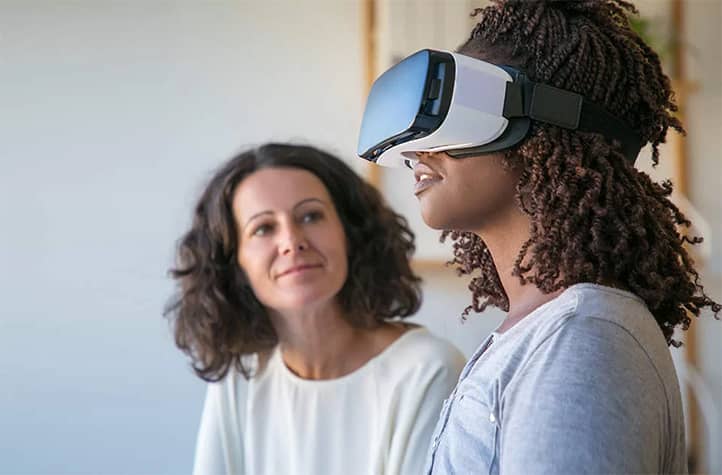
Treatment of Claustrophobia
Treating claustrophobia is a complex process that includes various methods of psychotherapy, medication, and self-help practices. The approach to treatment depends on the severity of symptoms and the unique characteristics of each patient. It is important to understand that claustrophobia does not disappear instantly, but with proper methods and support, anxiety can be significantly reduced, and quality of life improved.
Cognitive Behavioral Therapy (CBT)
Cognitive Behavioral Therapy is one of the most effective methods for treating claustrophobia. It aims to change irrational thoughts and reactions related to confined spaces and helps patients develop skills to control their fear.
- Identifying Irrational Thoughts. The therapist helps the patient recognize and understand the negative beliefs and fears that arise in confined spaces. This may include fears of suffocation, inability to escape, or losing control over the situation.
- Replacing Negative Thoughts with Positive Ones. After identifying irrational beliefs, the therapist works with the patient to replace them with more realistic and positive thoughts. For example, instead of “I will suffocate in the elevator,” the patient learns to think, “I am safe and can get out at any floor.”
- Self-Control and Relaxation Skills. During CBT, patients learn techniques to help reduce anxiety and panic levels. This may include breathing exercises, relaxation techniques, and visualization methods.
Exposure Therapy
Exposure therapy is a specialized technique often included in CBT, though it can also be applied as a standalone treatment for claustrophobia. The main goal is to help the patient overcome fear through gradual exposure to frightening situations.
- Creating a Hierarchy of Fears. The therapist and patient create a list of situations that provoke fear, starting with the easiest and ending with the most challenging. For example, this may begin with a small room, then an elevator, an underground parking lot, and finally an airplane.
- Gradual Exposure. The patient slowly and step-by-step faces frightening situations, starting with less intimidating ones. For instance, they may begin by staying in a small room, then enter an elevator and spend a few minutes there.
- Exercises to Reinforce Progress. At each stage, the patient performs specific exercises to control anxiety, such as deep breathing or focusing on positive thoughts. The therapist helps the patient realize that a sense of safety is possible even in frightening situations.
- Gradual Reduction of Fear. With each successful attempt, fear gradually decreases, and the patient gains confidence. This helps create new neural pathways where confined spaces are no longer associated with danger.
Using VR Technology in Treating Claustrophobia
With the development of digital technology, virtual reality (VR) offers new opportunities for treating claustrophobia. VR technology allows a person to be safely immersed in situations that trigger fear, such as confined spaces, and to gradually become accustomed to them in a controlled environment. This method is especially popular in psychotherapy, as it helps patients adapt to their fears without leaving the therapist’s office.
During VR therapy, the patient wears a VR headset, which allows them to be placed in various virtual confined spaces — an elevator, a small room, a car, an airplane cabin, etc. These immersions are supervised by a psychotherapist, who monitors the patient’s reactions and gradually increases the level of challenge in “fear-inducing” situations as the patient becomes accustomed to them.
Research has shown that VR therapy for claustrophobia can be as effective as traditional methods of cognitive behavioral therapy. Studies indicate that after several VR sessions, patients show significant reductions in anxiety and fear when encountering real confined spaces. This is due to the regular practice VR technology allows, which helps the brain become accustomed to new perception patterns.
Medication
Medication is not always necessary for treating claustrophobia, but it can be helpful in cases where symptoms are so severe that they interfere with the patient’s daily life or their ability to work with a therapist.
- Antidepressants. Some antidepressants, particularly SSRIs (selective serotonin reuptake inhibitors), help reduce anxiety. Medications like sertraline or paroxetine are often prescribed for phobias and anxiety disorders. They work by increasing serotonin levels in the brain, which improves mood and reduces anxiety.
- Anxiolytics (Tranquilizers). Medications from the anxiolytic group, such as diazepam or lorazepam, can be used for short-term relief of intense anxiety. They quickly alleviate symptoms but are typically prescribed with limitations, as they may cause dependency.
- Beta-Blockers. These medications help control physical symptoms of anxiety, such as rapid heartbeat and tremors. Beta-blockers, like propranolol, are used in situations where the patient needs to cope with anxiety in confined spaces, for example, during flights.
- Antipsychotics. In rare and particularly severe cases, a doctor may prescribe antipsychotics to relieve intense anxiety and fear, especially if claustrophobia coexists with other mental disorders.
Relaxation and Stress Management Techniques
Relaxation techniques play an important role in treating claustrophobia as they help combat anxiety and teach patients to control their stress response.
- Breathing Techniques. Breathing exercises, such as deep breathing or the “4-7-8” technique (inhale for 4 seconds, hold for 7, exhale for 8), help stabilize breathing and lower adrenaline levels. This is particularly important for preventing panic attacks in confined spaces.
- Meditation and Mindfulness. Mindfulness practices teach the patient to stay in the present moment and not dwell on fears. Meditation helps calm the mind and develop the ability to control thoughts and emotions.
- Progressive Muscle Relaxation. This technique involves tensing and relaxing different muscle groups sequentially, which helps relieve physical tension and reduce anxiety.
- Visualization. Visualization allows the patient to imagine a safe place or a positive outcome to an anxiety-provoking situation. For example, before entering an elevator, they might imagine calmly exiting a few seconds later, which reduces anxiety levels.
Group Therapy and Support
Group therapy can also be beneficial for people with claustrophobia, as it provides an opportunity to communicate with others who experience similar fears and emotions. Support from the group and observing the success of other participants helps patients feel less alone and motivates them to overcome their phobia.
- Sharing Experiences. In the group, patients share their fears and stories. This helps them realize that their experiences are not unique and that claustrophobia can be effectively managed.
- Mutual Support. Group members provide emotional support to one another, which is important for overcoming fear. Sometimes, knowing that others have gone through similar experiences and succeeded reinforces belief in oneself.
- Group Exercises. In some cases, the psychotherapist suggests performing exposure exercises in the group, where each participant has the opportunity to receive support from others.
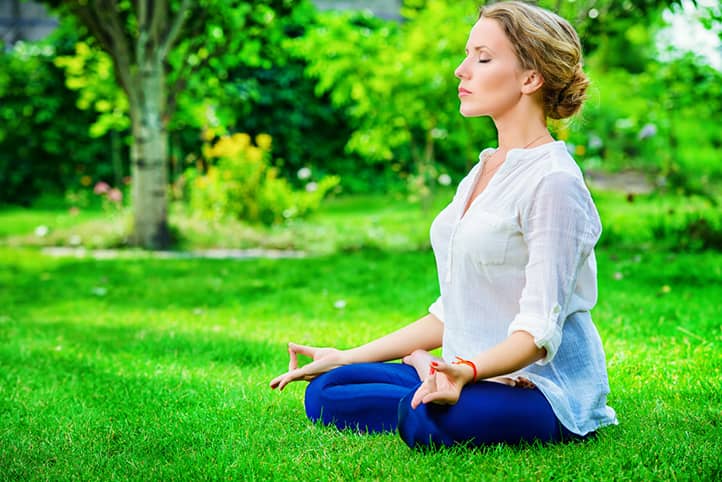
Self-Help Tips for Claustrophobia
Working independently on claustrophobia can be a powerful tool for reducing anxiety and improving quality of life. While professional help plays an important role, self-help methods complement treatment by helping individuals build confidence and manage fear episodes in everyday situations. Key techniques include awareness of emotions, development of relaxation skills, and practical exercises to reduce anxiety.
Awareness and Understanding of Your Fear
The first step in overcoming claustrophobia is to understand its nature and how it manifests. You should learn to recognize which thoughts and situations trigger fear in order to better control your response to them.
- Keeping a Journal: Writing down thoughts and emotions that arise in situations related to confined spaces helps identify fear triggers. You can record situations that provoke anxiety, your feelings, and actions in those moments. This allows for a better understanding of how claustrophobia affects your life and reveals patterns that can be used to manage fear.
- Awareness of Triggers: You can create a list of places and situations that provoke fear (e.g., elevators, subways, enclosed rooms without windows). This list will help you develop personalized strategies to reduce anxiety in specific conditions.
- Self-Talk: Explaining to yourself that fear is a natural bodily reaction, which intensifies in stressful situations, can help reduce tension. Reminding yourself that claustrophobia is merely a condition that you can control allows you to respond more calmly to triggers.
Practicing Breathing Techniques
Breathing exercises help reduce the physical reaction to anxiety and prevent panic attacks. Proper breathing slows the heartbeat, normalizes oxygen levels, and lowers adrenaline, making you feel calmer and more balanced.
- Deep Breathing: During episodes of anxiety, it’s important to breathe slowly and deeply, focusing on each inhale and exhale. For instance, inhaling through the nose for a count of 4, holding the breath for 2-3 counts, and slowly exhaling through the mouth for 6-8 counts can reduce tension.
- Alternate Nostril Breathing: This method involves alternately inhaling and exhaling through one nostril while covering the other with a finger. This technique helps achieve balance and reduce anxiety levels in stressful situations.
Developing Mindfulness Skills and Meditation
Mindfulness practices such as meditation and mindfulness exercises help you stay present and control anxious thoughts. They allow you to avoid getting caught up in fears and learn to observe your thoughts and emotions without judgment or panic.
- Mindfulness Practice: This technique involves focusing on your current sensations without analyzing or trying to change them. For example, by focusing on your breathing or surrounding sounds, you can reduce anxiety and shift your attention away from frightening thoughts.
- Visualization: Visualizing a safe place or a pleasant situation helps reduce anxiety. Before entering a confined space, you might imagine a place where you feel calm and protected, such as a beach or forest.
- Body Scan Technique: This practice involves gradually paying attention to different parts of the body, from head to toe, to identify and relax tense muscles. It helps relieve physical tension and release accumulated stress.
Gradual Expansion of Comfort Zone
This technique involves gradually exposing yourself to fear-inducing situations, starting with less anxiety-provoking ones and slowly progressing to more challenging situations. This approach helps reduce the intensity of fear and prepares the body for more difficult challenges.
- Gradual Exposure: Instead of immediately entering an elevator or underground space, you can start with easier situations—such as spending time in a small room with an open door. Then, once you feel confident, you can move on to more confined spaces like elevators or subway cars.
- Setting Achievable Goals: You can start with small steps, such as a brief stay in an elevator or confined space. Each time you successfully complete a step, you reinforce confidence and reduce your overall fear level.
- Rewarding Successes: Rewarding yourself for successful steps, like treating yourself to a favorite snack or taking a break, helps maintain motivation and eases the process of overcoming the phobia.
Creating Positive Mental Attitudes
Positive affirmations and self-statements can play a key role in overcoming claustrophobia, as they help change perceptions of fear and build confidence.
- Affirmations: Repeating positive statements, such as “I control my fears,” “I am safe,” and “My body is calm,” helps form a positive attitude toward frightening situations.
- Replacing Negative Thoughts with Positive Ones: When anxious thoughts appear, it’s important to consciously replace them with positive ones. For example, instead of “I won’t be able to get out of here,” you could tell yourself, “I am safe and in complete control of the situation.”
- Focus on Successes: Reminding yourself of past successes and moments when you managed to cope with anxiety helps build confidence and reduces fear of future situations.
Using Practical Distraction Techniques
When fear becomes overwhelming, practical distraction techniques can help redirect attention and reduce anxiety. These distraction methods focus the mind on other activities and sensations, allowing for a detachment from anxious thoughts.
- Counting: You can start counting to 10 or 100 to shift your attention from anxiety to a mental task. For example, you could count steps or items around you, which helps focus on something outside of the confined space.
- Focusing on External Details: Looking around and noticing small details (e.g., the color of the walls, the arrangement of furniture, objects around) can distract you from anxious thoughts and reduce fear.
- Using Tactile Sensations: Touching textures or objects, such as a stone or piece of fabric, helps “ground” yourself and shifts attention to physical sensations.
Self-Support and Motivation
Claustrophobia is a condition that is not always easy to cope with, so self-support and motivation are important for long-term work on yourself.
- Maintaining a Positive Attitude: Remind yourself that progress is possible and that every step, no matter how small, is significant. A positive attitude contributes to building confidence and reduces feelings of despair.
- Rewards for Achievements: Each time you successfully cope with a situation related to claustrophobia, reward yourself. This could be a small reward that boosts motivation and creates positive reinforcement.
- Reminder of Purpose: Constantly reminding yourself that working on yourself leads to an improved quality of life and reduced fear helps maintain motivation and commitment to progress.
These self-help methods provide tools for overcoming claustrophobia, helping you better understand and control your fear.
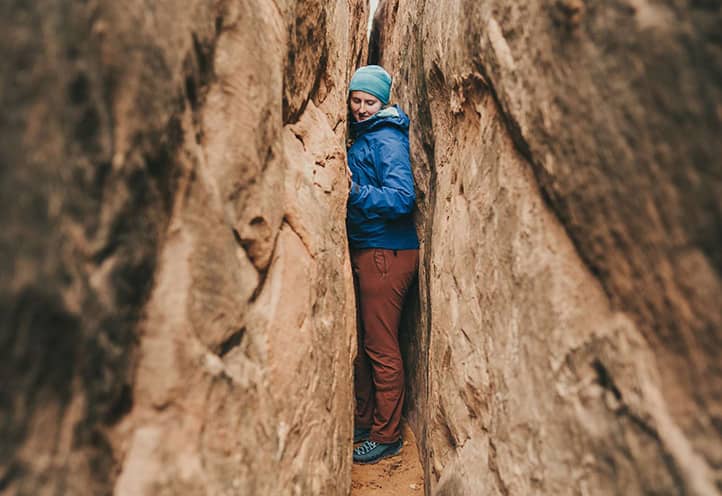
Conclusion
Claustrophobia is more than just a fear of confined spaces. It is a complex psychological condition that can significantly limit daily life, causing intense fear and anxiety in situations that most people consider routine.
Confronted with this condition, many feel powerless and begin avoiding situations that could trigger a panic attack. However, understanding the nature of claustrophobia, its symptoms, and causes not only helps individuals become more aware of their condition but also enables them to start taking steps to overcome their fear.
It is important to remember that claustrophobia has deep roots, associated with both genetic and psychological factors, such as past negative experiences, excessive stress, or the presence of other anxiety disorders. These aspects often intensify the fear and make it more persistent, creating a vicious cycle that is difficult to break. Therefore, treating claustrophobia requires a systematic approach that combines both therapeutic methods and personal effort.
Professional methods, such as cognitive-behavioral therapy, exposure therapy, and medication support, can significantly help in treating claustrophobia. These approaches assist individuals in recognizing the irrationality of their fear, learning to manage their emotions, and ceasing to perceive confined spaces as an immediate threat. Modern psychotherapy can offer individualized solutions tailored to each person’s unique characteristics, enhancing treatment effectiveness and accelerating recovery.
Equally important is personal work on oneself. Self-help techniques, such as awareness of personal triggers, breathing exercises, mindfulness, and gradual expansion of the comfort zone, help individuals feel more confident and control their reactions in challenging situations.
Anyone dealing with claustrophobia should remember that their fear is not insurmountable. The challenging path to overcoming this condition requires patience, motivation, and belief in one’s abilities, yet it is possible and achievable. Step by step, by strengthening their psyche and applying effective techniques, individuals can achieve significant improvement and even complete freedom from fear. Support from loved ones and professional assistance from a psychologist can also play an important role, reminding individuals that they are not alone in their struggle and that help is always available.
Claustrophobia is a challenge, but with the right approach and effort, it does not have to be a life sentence. It is important not to be afraid to seek help, to use various methods, and to believe that fears can be overcome.
